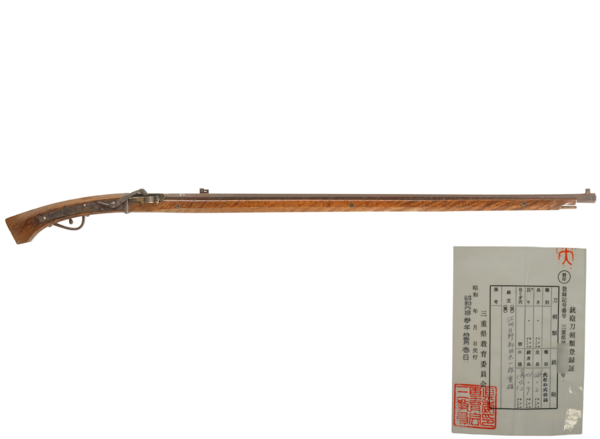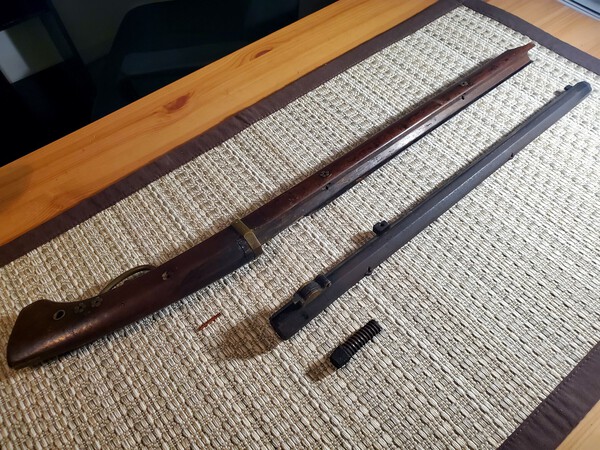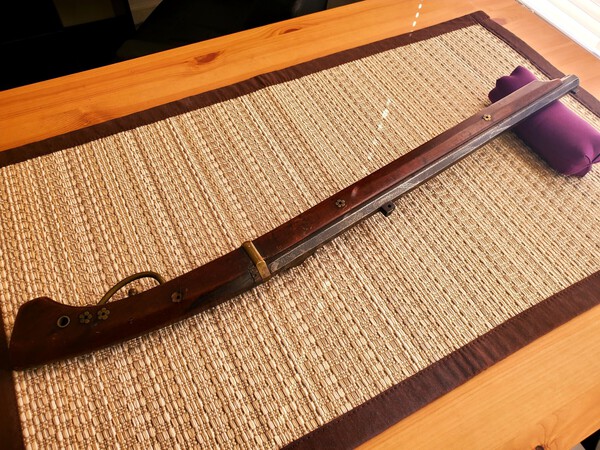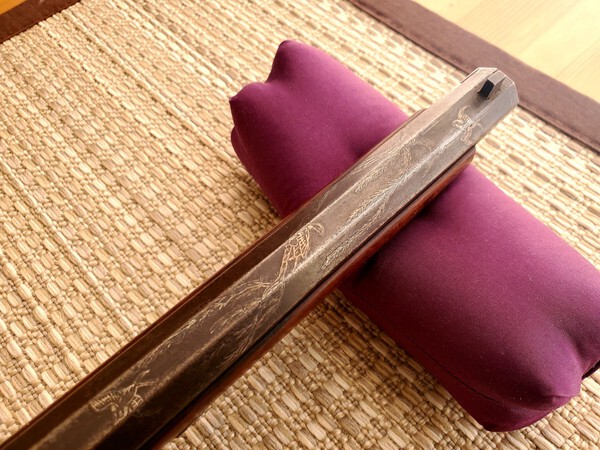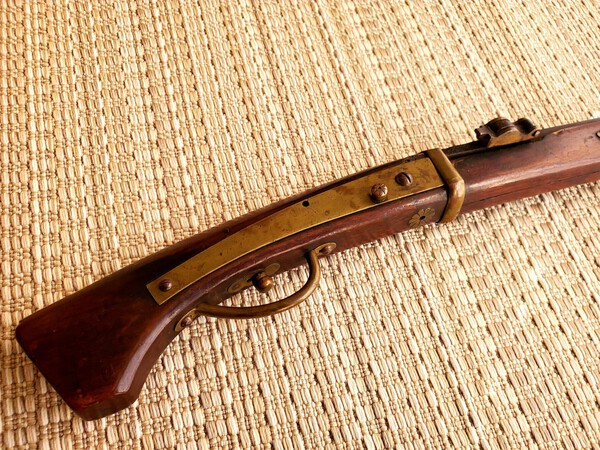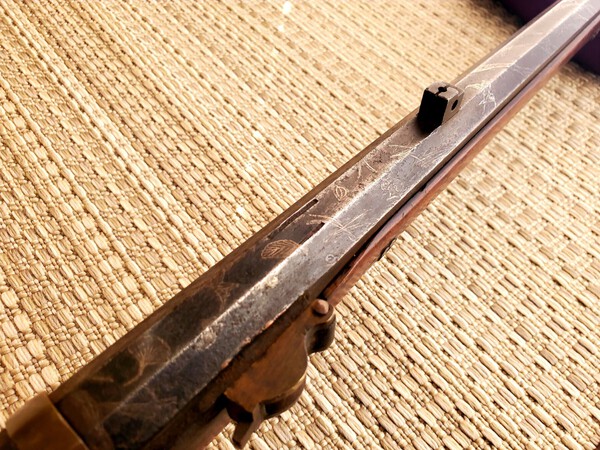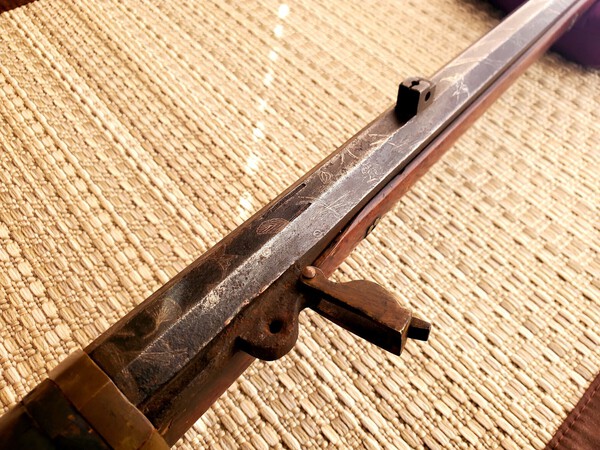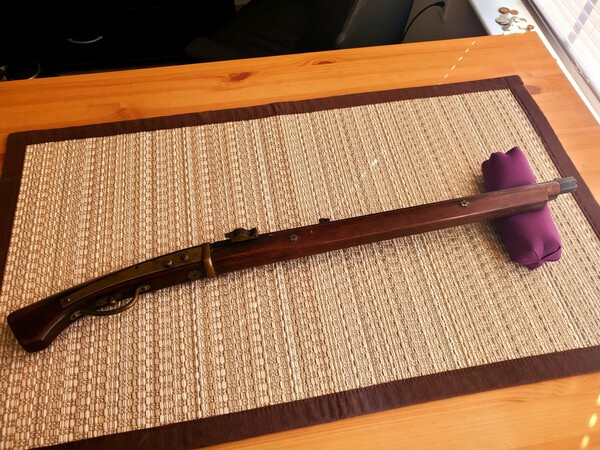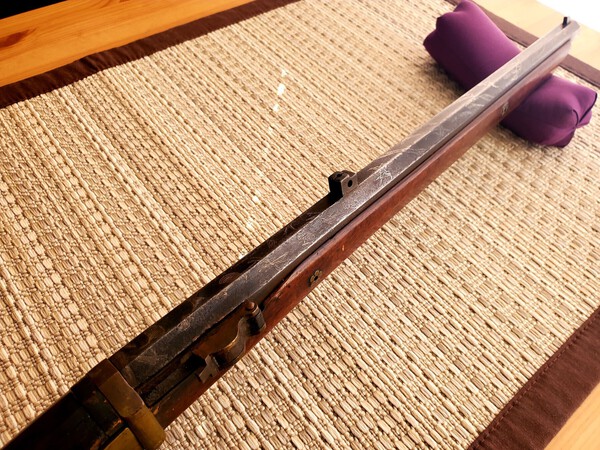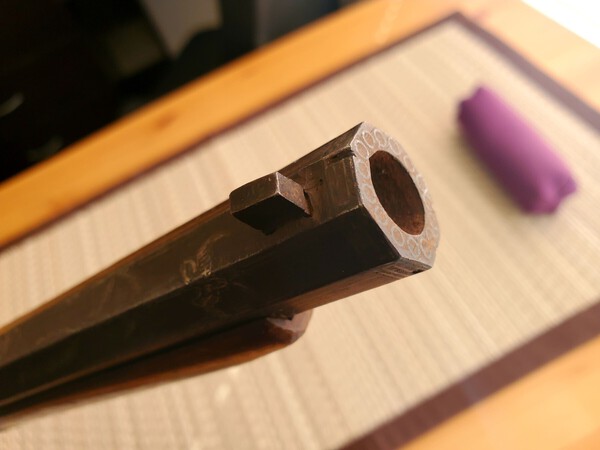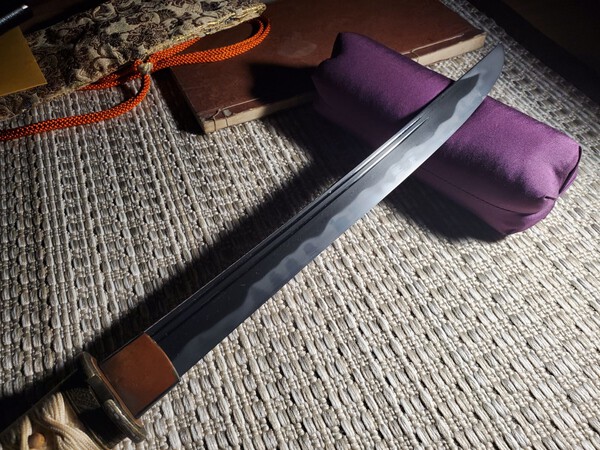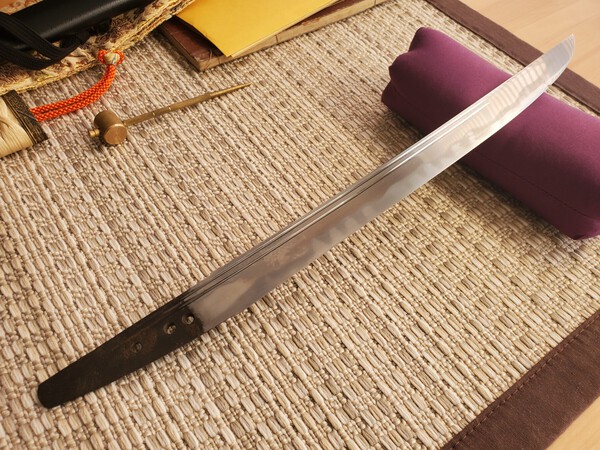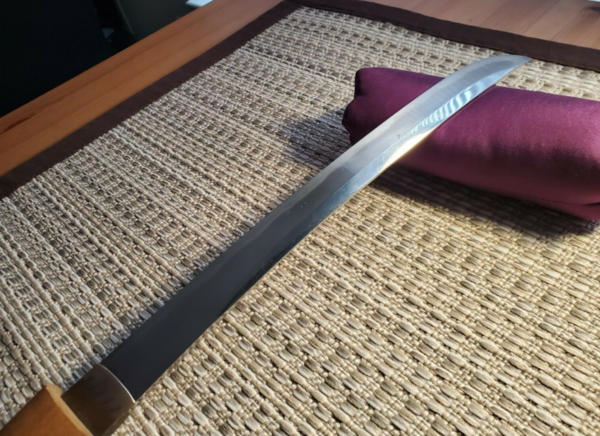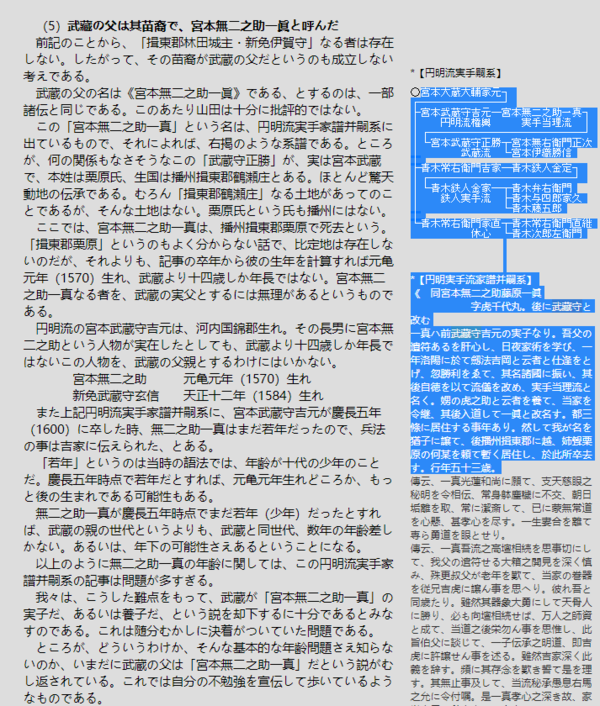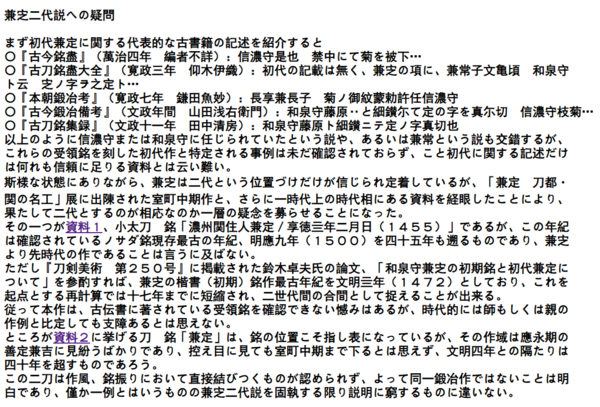-
Posts
120 -
Joined
-
Last visited
-
Days Won
1
Content Type
Profiles
Forums
Events
Store
Downloads
Gallery
Everything posted by WulinRuilong
-

Anyone can identify this Teppo?
WulinRuilong replied to WulinRuilong's topic in Tanegashima / Teppo / Hinawajū
Thanks! I also assume this may related to Tazuke-Ryu. But could it be an indication of Hino manufacture? It looks like this one -

Anyone can identify this Teppo?
WulinRuilong replied to WulinRuilong's topic in Tanegashima / Teppo / Hinawajū
-

Anyone can identify this Teppo?
WulinRuilong replied to WulinRuilong's topic in Tanegashima / Teppo / Hinawajū
-

Anyone can identify this Teppo?
WulinRuilong replied to WulinRuilong's topic in Tanegashima / Teppo / Hinawajū
-
Hi all, I just acquired an antique Teppo. It looks like an Edo period Teppo for me, but I can't recognize more details. If anyone can identify it?
-
There is something I need to point out: 1. What I said about rust and possible flaws is statement of objective fact. Another fact is, even the most experienced togishi can't tell if a rusted nihonto can be repaired because rust may hide damage (sometimes can be fatal damage) on the blade. I've seen a lot of swords being abandoned due to serious damage found in the repair process. Therefore, it is necessary for him to fully understand the situation before making a decision. 2.Togishi may mislead customers for their own benefit(actually there was a togishi who tried to steal my sword...). It's always good to be able to hear different people's opinions, at least the people on the forum are not "Interested Person."
-
I didn't tell him to do or not to do something. And the market price of a polishing service not decided by a certain togishi but decided by supply and demand in the market. He needs information from different sources to make decision, not be led by the nose by a certain togishi. Don't build information barrier.
-
The average polish cost for wakizashi is over $1000 now, it is difficult to find a togishi who would like to accept a lower price. And maybe there are more damage under the rust.
-
Uda Kunimune is a kind of Nihonto that was very common in the Muromachi period, so I don't think there is any need to worry about gimei. But this blade is so badly damaged that I think it could be very expensive to repair. Usually, a Nihonto at this condition is worth less than $500
-
Units of measurement in ancient Japan were not uniform
-
Edo Period Antique Japanese Sword Wakizashi Unsigned Rare Unokubi Zukuri鵜の首造 | eBay Still available.
-
Edo period Mumei Unokubi Wakizashi still available. Others are sold.
-
-
-
-
-
Greetings all! I just want to share a recently acquired tanto, made by Izumi no Kami Kanesada和泉守兼定 (Seki Kanesada, 2nd generation) This tanto is his early work.
-
兼工房_日本刀鍛冶の技術と沖縄伝統漆工芸の融合_沖縄県南城市 (kaneruor.jp) The answer is Yes. Here is his website.
-
-
Hi guys, I have some wakizashi and Yari for sale. Two Edo period Mumei Wakizashi and One Muromachi Yari. Here are my ebay links. Feel free to ask questions or make offer. Edo Period Japanese Sword Wakizashi Unsigned Seki Zenjo関善定 w/NBTHK Paper | eBay Edo Period Antique Japanese Sword Wakizashi Unsigned Rare Unokubi Zukuri鵜の首造 | eBay AntiqueJapanese Katana Spear Yari Muromachi period KaneIe兼舎Signed w/ NBTHK Paper | eBay
-

Komonjo, with origami
WulinRuilong replied to WillFalstaff's topic in General Nihonto Related Discussion
That green paper is not even a NBTHK paper -
I read this article, but this statement has no evidence. I think this is an incorrect interpretation of the inscription(父新免号無二為十手之家武蔵受家業朝鑚暮研) 父新免号無二為十手之家武蔵受家業朝鑚暮研= His father Shinmen Muni is a Master of Jutte(十手),Miyamoto Musashi learned the skill of Jitte and practiced every day. There is nothing related to the family business or business name. In fact, the author misunderstood the words(十手之家) as swordsman family. The correct translation of 十手之家 should be Master of Jutte. Also, there is another article says one record show that Musashi's father is 宮本無二之助 who claimed to be Musashi-no-Kami. But according to this record the title Musashi-no-Kami is only used in a few members of the Jutte school, so it is not a family business name, and it is contradicting other records.(Well, I read all articles on that website. Some authors claim that Shinmen Musashi no Kami is the business name of the Shinmen Muni's family, but they fail to provide directly evidence. This is the only record says 宮本無二之助 also known as Musashi-no-Kami武蔵守) In sum, if you believe that the title Musashi-no-Kami is a family business name (actually this is also a kind of self-proclaimed courtesy title) which is also used by Musashi's father. Then you have to assume that 宮本無二之助 and 新免無二 are same person. If so, you have to recognize a lot of conflicting records (So it is very unlikely to be true). And even Musashi and his father both used the title Musashi no Kami as business name, it still a proclaimed courtesy title since it is not recognized by the Imperial court. Also, there is no clear line between later Sengoku period and early Edo period. Musashi was born on later Sengoku period, so he still keeps old tradition of claiming a proclaimed courtesy title. Anyway, since you already noticed that people in Sengoku period do use some courtesy title like XXXX no Kami as their business/office name without permission, you should aware the courtesy titles like XXX no Kami on the sword don't have to be an official granted courtesy title.
-
My answers: 1. A swordsmith is likely to write a courtesy title without permission on a sword in Muromachi period and Sengoku period. But it is less likely to do so in Edo period. 2. The early history of Kanesada兼定 school is a mystery. The traditional view is that the Kanesada兼定 had three generations before Edo period, but this view(and the whole genealogy of Kanesada) has been challenged by a number of historians. There is now evidence that other swordsmiths(別人兼定) who used this signature Kanesada兼定 have not been recorded. See below articles: http://www.nihonto-club.net/kantei/cool_5/kaisetsu5_6.html http://www.nbthk-gf.or.jp/kanesadasyokimei/kanesadasyokimei.html 3. Miyamoto Musashi claim to be Shinmen Musashi no Kami Fujiwara no Harunobu(新免武蔵守藤原玄信) in his book The Book of Five Rings五輪書,without permission. Someone claim to be a courtesy title without permission called 自官 in Japanese. 4. As I know, Miyamoto Musashi's father Shinmen Munisai 新免無二斎 didn't use the title Musashi no Kami武蔵守. So, I don't see Miyamoto Musashi has any connection to the title.
-
Miyamoto Musashi(宮本武藏), I guess you heard this name. Another of his name is Shinmen Musashi no Kami Fujiwara no Harunobu(新免武蔵守藤原玄信), actually he claims to be Musashi no Kami(武藏守). By the Muromachi period and Sengoku period, many people granted themself honorary titles without permission of imperial court. When the legitimacy of their title is officially questioned, they can easily claim it as a part of their first name and avoid punishment. So, so called Official Names (官名) is just a tricky that allows them to claim a title that doesn't really belong to them while avoiding legal problems. Below links are explanation why Official Names actually are self-proclaimed honorary titles 仮名 (通称) - Wikipedia 百官名 - Wikipedia Also, these self-proclaimed honorary titles were officially banned by the government during the Meiji era.
-
This is normal in Sengoku period, especially in Osafune school. For example, Bizen Osafune-jū Sahyōe no Jō Kagemitsu備前国長船住左兵衛尉景光 claim to be Sahyōe no Jō左兵衛尉 Bishū Osafune-jū Uemon no Jō Yasumitsu備州長船住右衛門尉康光 claim to be Uemon no Jō右衛門尉 Bizen koku jyu Osafune Yosouzaemon no jo Sukesada備前国住長船与三左衛門尉祐定 claim to be Zaemon no jo左衛門尉 Bizen koku jyu Osafune Sakyosin Munemitsu備前国住長船左京進宗光 claim to be Sakyosin左京進 In fact, only a few titles were officially recognized by the imperial court such as Izumi no kami Kanesada‘s和泉守兼定 title Izumi no kami和泉守 This was a popular behavior at that time so many people (not only swordsmith) like to grant themselves titles. So here is a mirror with a signature "Higo no Kami肥後守"


